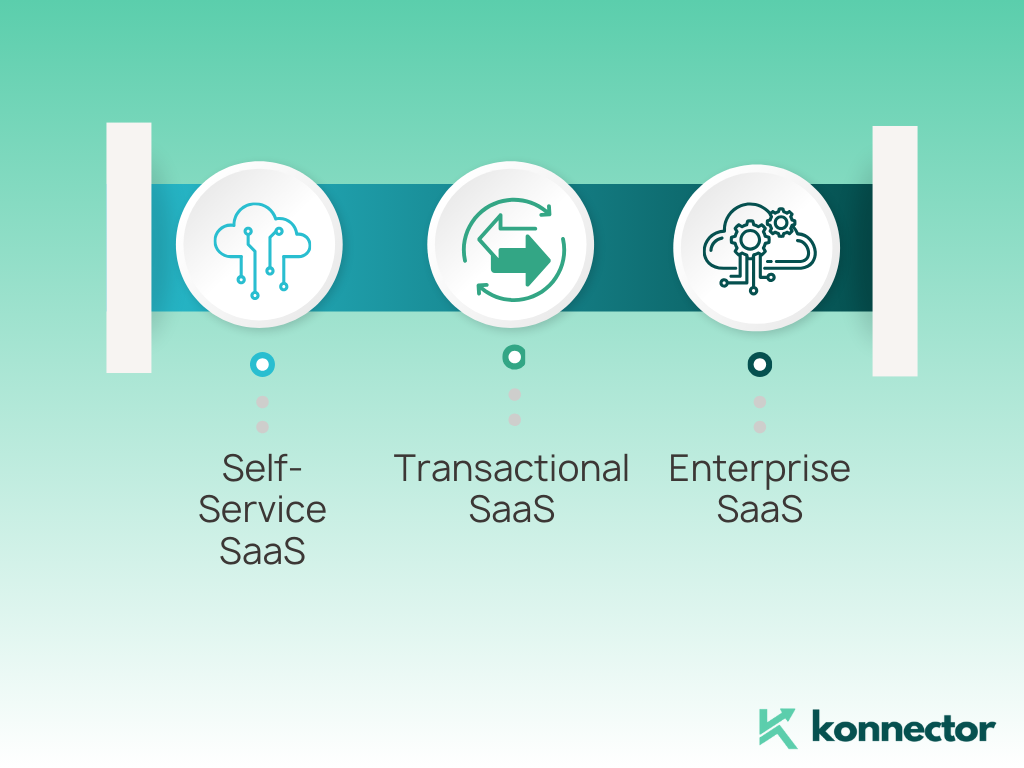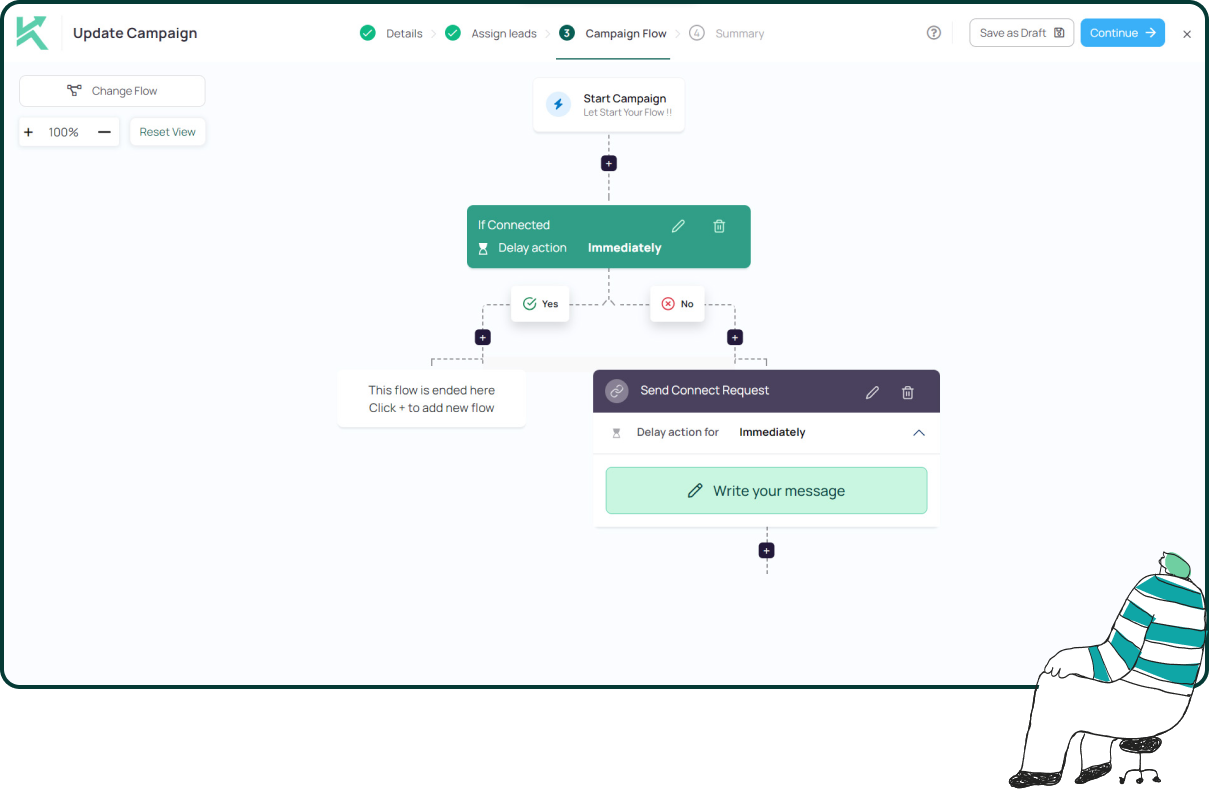A Beginner’s Guide to SaaS Sales
SaaS (Software-as-a-Service) has become the backbone of modern business technology. With global SaaS adoption expected to reach trillions in spending, sales professionals and founders alike are searching for smarter, scalable ways to sell subscriptions. Unlike traditional software deals, SaaS sales isn’t about a one-time transaction—it’s about building recurring revenue streams, ensuring long-term customer success, and nurturing lasting relationships. In this beginner’s guide, we’ll walk you through everything you need to know, from understanding different SaaS sales models to leveraging automation tools like Konnector that make outreach faster, smarter, and more effective.
What is SaaS Sales?
SaaS sales isn’t just about closing deals—it’s about creating a predictable stream of recurring revenue by selling software that lives in the cloud.
Unlike traditional one-time licenses, SaaS products are subscription-based, which means the sales process requires a focus on both customer acquisition and long-term retention. For beginners, understanding SaaS sales is the first step to building a scalable growth engine.
SaaS sales is not a one-and-done transaction—it’s an ongoing relationship where value must be proven month after month.
Read more—-> SaaS Sales: The Complete Guide to Selling Software
- Definition: SaaS sales is the process of selling cloud-based software on a subscription model, usually monthly or annually.
- Key Focus: Customers pay recurring fees, making customer retention just as important as initial acquisition.
- Challenge: Convincing prospects of long-term value while managing risks like churn and competition.
Unlike traditional software sales, SaaS sales is about delivering continuous value, not just closing one deal.
Why SaaS Sales is Different
Selling SaaS isn’t the same as selling traditional software. Instead of a single upfront payment, SaaS companies rely on subscription revenue, which changes the entire approach to how sales teams operate. Success depends not only on signing new customers but also on retaining them over time, aligning sales with marketing, product, and customer success. This ongoing cycle makes SaaS sales both challenging and rewarding.
In SaaS sales, the real victory isn’t just winning a customer—it’s keeping them engaged and subscribed month after month.

- Recurring revenue: Unlike one-time software licenses, SaaS depends on subscription renewals, which means sales reps must focus on building long-term customer relationships.
- Flexible sales cycles: SMB SaaS products often close quickly, while enterprise SaaS deals take longer. Understanding this helps sales teams plan realistic timelines and resource allocation.
- Cross-team collaboration: SaaS sales requires close work with marketing to generate leads, product teams to refine demos, and customer success to ensure smooth onboarding—making it a truly collaborative function.
- Automation + personalization: Scaling SaaS sales means leveraging automation tools to reach more prospects while still delivering personalized messages that build trust and authenticity.
Types of SaaS Sales Models

1. Self-Service SaaS
- Customers sign up and pay online without human interaction.
- Examples: Canva, Dropbox.
- Pro: Scalable and low-cost.
- Con: Limited upselling opportunities.
2. Transactional SaaS
- Sales reps handle inbound or outbound leads, qualify them, and close deals.
- Great for mid-market SaaS where ACV (Annual Contract Value) is moderate.
- Often supported by LinkedIn outreach automation through tools like Konnector.
3. Enterprise SaaS
- High-touch, long cycle sales process with multiple stakeholders.
- Requires demos, pilots, and detailed proposals.
- High-value contracts (six or seven figures).
The SaaS Sales Funnel
- Lead Generation – Attracting potential customers via LinkedIn, ads, or referrals.
- Qualification – Identifying ICP (Ideal Customer Profile) fit.
- Discovery – Understanding pain points through meetings.
- Demo / Presentation – Showing the SaaS product in action.
- Proposal / Negotiation – Pricing discussions and objections.
- Close – Securing contract and onboarding.
- Expansion – Upselling, cross-selling, and renewals.

Key Metrics in SaaS Sales
- MRR / ARR: Monthly or Annual Recurring Revenue — shows predictable income.
- Customer Acquisition Cost (CAC): How much you spend to get one customer.
- Customer Lifetime Value (CLV): Revenue expected from a customer over time.
- Churn Rate: Percentage of customers leaving — a critical SaaS metric.
- Sales Velocity: Speed at which deals move through the pipeline.
Skills Every SaaS Sales Rep Needs
To succeed in SaaS sales, it’s not enough to just know your product—you need a mix of technical knowledge, soft skills, and persistence. A SaaS sales rep has to act as a consultant, problem-solver, and relationship builder all at once. The best reps balance product expertise with customer empathy, while also mastering the use of automation tools that make selling at scale possible.
The most successful SaaS sales reps don’t just sell—they guide, educate, and build lasting partnerships with their customers.

- Product expertise and demo skills: Clearly explain how your SaaS solution works and show its real-world value during demos.
- Buyer psychology and consultative selling: Understand customer pain points and position your SaaS as the best-fit solution.
- Comfort with technology: Embrace automation platforms and sales tools to streamline outreach and follow-ups.
- Persistence and objection handling: Stay resilient when faced with rejections and address objections with confidence.
- Collaboration skills: Work hand-in-hand with marketing, product, and customer success teams to ensure a smooth customer journey from prospect to renewal.
SaaS Sales Strategies for Beginners
1. Define Your ICP
- Who benefits most from your product?
- Industry, company size, role, and pain points should be mapped clearly.
2. Build a Multi-Channel Prospecting System
- Combine LinkedIn outreach, cold email, and referrals.
- Use Konnector to extract leads from LinkedIn groups, events, and posts.
3. Personalize Your Outreach
- Avoid generic messages.
- AI-powered comments from Konnector help break the ice before connection requests.
4. Focus on Value, Not Features
- Prospects care about outcomes, not just tools.
- Frame your SaaS in terms of ROI and saved time.
Read more—-> How to Build an Effective B2B SaaS Sales process?
5. Nail the Product Demo
- Keep it problem-focused, not feature-dense.
- Use case studies and storytelling.
6. Use Automation Smartly
- Manually following up with 100s of leads is impossible.
- Konnector automates campaigns with conditional flows like “if connected,” “if profile viewed,” and “open InMails.”
- This ensures no lead falls through the cracks.
Challenges in SaaS Sales
- Long decision cycles with multiple stakeholders.
- Churn risk if onboarding is weak.
- Competition with dozens of SaaS products in the same space.
- Buyer skepticism due to subscription fatigue.
How Konnector Supercharges SaaS Sales
- Lead Extraction: Pull targeted leads directly from LinkedIn searches, groups, and events.
- Automated Engagement: Like, follow, comment, and connect — building trust before pitching.
- Campaign Flow: Smart branching ensures new vs. existing connections get different sequences.
- Open InMails: Use purchased InMails wisely by reaching only non-connections.
- AI-Powered Messaging: Drafts personalized and conversational comments/messages.
With Konnector, SaaS sales reps can automate 70% of their outreach tasks while keeping conversations human and engaging.
Future of SaaS Sales
- Conversational AI will play a bigger role in prospecting and nurturing.
- Product-led growth (PLG) will dominate for SMB SaaS.
- Data-driven personalization will be essential to stand out.
- Automation + human touch will remain the winning formula.
Read more—->Why AI-Powered LinkedIn Automation is the Future of B2B Prospecting
Action Plan for Beginners
- Map your ICP clearly.
- Choose a sales model (self-serve, transactional, or enterprise).
- Set up your LinkedIn outreach engine with Konnector.
- Track your metrics: CAC, CLV, and churn.
- Refine your demos and sales playbook continuously.
- Automate repetitive tasks but keep conversations human.
Conclusion
At its core, SaaS sales isn’t about pushing features—it’s about helping customers experience real, lasting value. If you’re just starting out, begin small: define your ideal customer profile (ICP), craft the right messaging, and lean on smart automation tools to scale your outreach. Platforms like Konnector give SaaS sales reps a powerful advantage, making it possible to reach more prospects without losing the personal touch. Ultimately, the future of SaaS sales belongs to those who master the balance of automation and empathy—using technology to scale while still building genuine human connections.

11x Your LinkedIn Outreach With
Automation and Gen AI
Harness the power of LinkedIn Automation and Gen AI to amplify your reach like never before. Engage thousands of leads weekly with AI-driven comments and targeted campaigns—all from one lead-gen powerhouse platform.
Frequently Asked Questions
SaaS sales is the process of acquiring and retaining customers for subscription-based, cloud-delivered software. Success depends on recurring revenue, long-term customer success, and ongoing value delivery.
Instead of a one-time license, SaaS uses monthly or annual subscriptions. That means the job isn’t done at “close”—you must focus on onboarding, adoption, renewals, and expansions to grow LTV and reduce churn.
Most teams use one or a blend of three: self-serve (no human touch), transactional (light to moderate sales-assisted), and enterprise (high-touch, multi-stakeholder, longer cycles).
Start with MRR/ARR, CAC, LTV, win rate, sales velocity, and logo/revenue churn. As you scale, layer in pipeline coverage, average deal size, and payback period.
Combine firmographics (industry, size, region), technographics (tools used), roles, and pains your product solves. Validate with your highest-retention customers and data from closed-won/lost deals.
Lead generation → qualification → discovery → demo → proposal/objections → close → onboarding → renewal/expansion. Each stage should have clear exit criteria and documented playbooks.
Use role-based templates plus 1–2 custom lines on the prospect’s company or recent activity. Konnector helps with AI-powered LinkedIn comments and targeted engagement, so you warm up prospects before messaging.
It streamlines LinkedIn prospecting by extracting leads, automating smart engagements (likes, follows, AI comments), and surfacing warm signals such as “if-profile-viewed,” so you prioritize the right people at the right time.
Common ones include price, timing, security, integrations, and ROI. Use discovery notes to map pains to outcomes, provide proof (case studies, benchmarks), and offer a next step like a pilot or limited-scope rollout.
Set accurate expectations, sell to ICP-fit accounts, and ensure a tight handoff to onboarding and customer success. Partner on success plans, adoption milestones, and regular value reviews.






